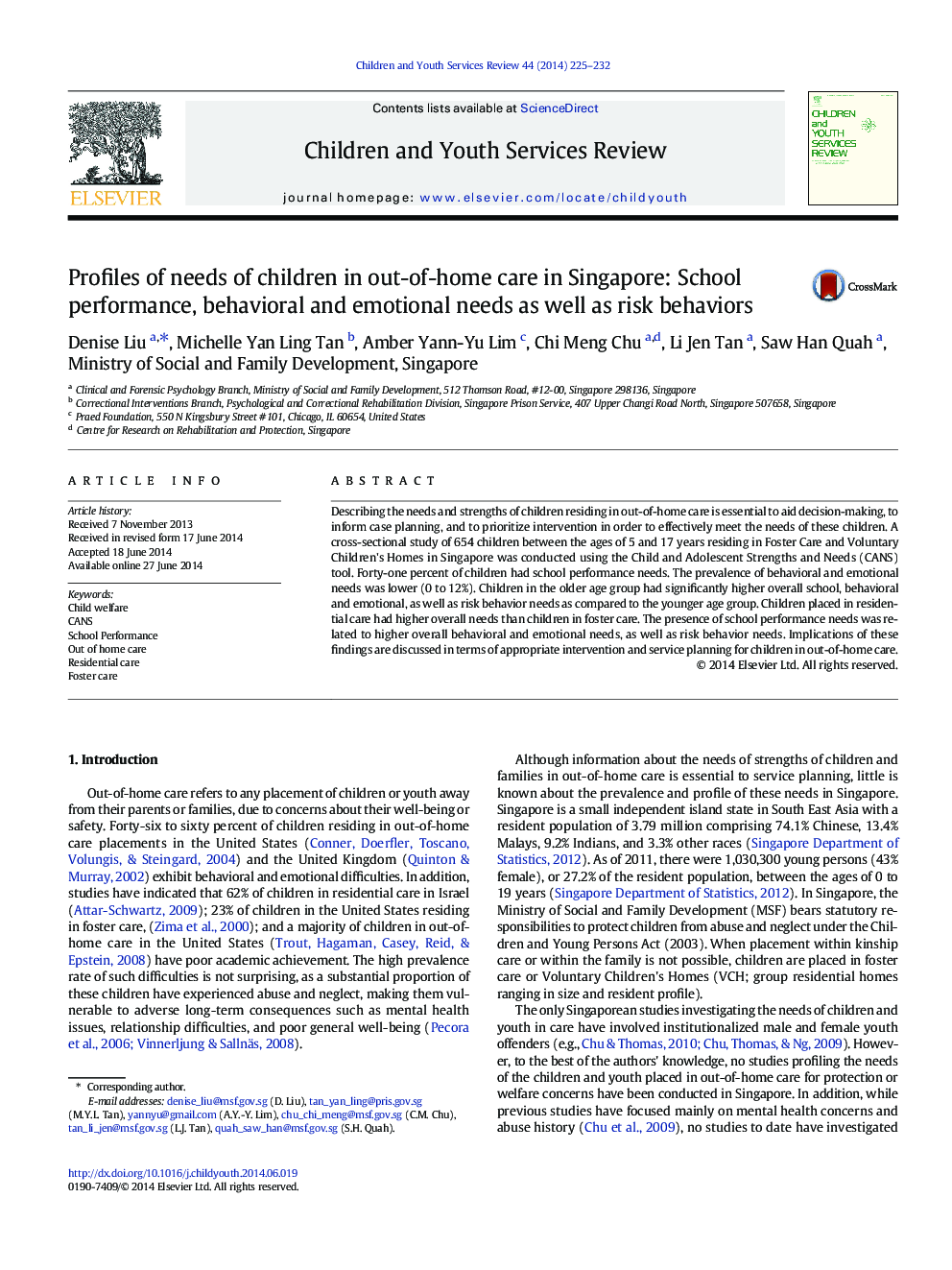| Article ID | Journal | Published Year | Pages | File Type |
|---|---|---|---|---|
| 6834248 | Children and Youth Services Review | 2014 | 8 Pages |
Abstract
Describing the needs and strengths of children residing in out-of-home care is essential to aid decision-making, to inform case planning, and to prioritize intervention in order to effectively meet the needs of these children. A cross-sectional study of 654 children between the ages of 5 and 17Â years residing in Foster Care and Voluntary Children's Homes in Singapore was conducted using the Child and Adolescent Strengths and Needs (CANS) tool. Forty-one percent of children had school performance needs. The prevalence of behavioral and emotional needs was lower (0 to 12%). Children in the older age group had significantly higher overall school, behavioral and emotional, as well as risk behavior needs as compared to the younger age group. Children placed in residential care had higher overall needs than children in foster care. The presence of school performance needs was related to higher overall behavioral and emotional needs, as well as risk behavior needs. Implications of these findings are discussed in terms of appropriate intervention and service planning for children in out-of-home care.
Related Topics
Health Sciences
Medicine and Dentistry
Perinatology, Pediatrics and Child Health
Authors
Denise Liu, Michelle Yan Ling Tan, Amber Yann-Yu Lim, Chi Meng Chu, Li Jen Tan, Saw Han Quah, Ministry of Social and Family Development, Singapore Ministry of Social and Family Development, Singapore,
